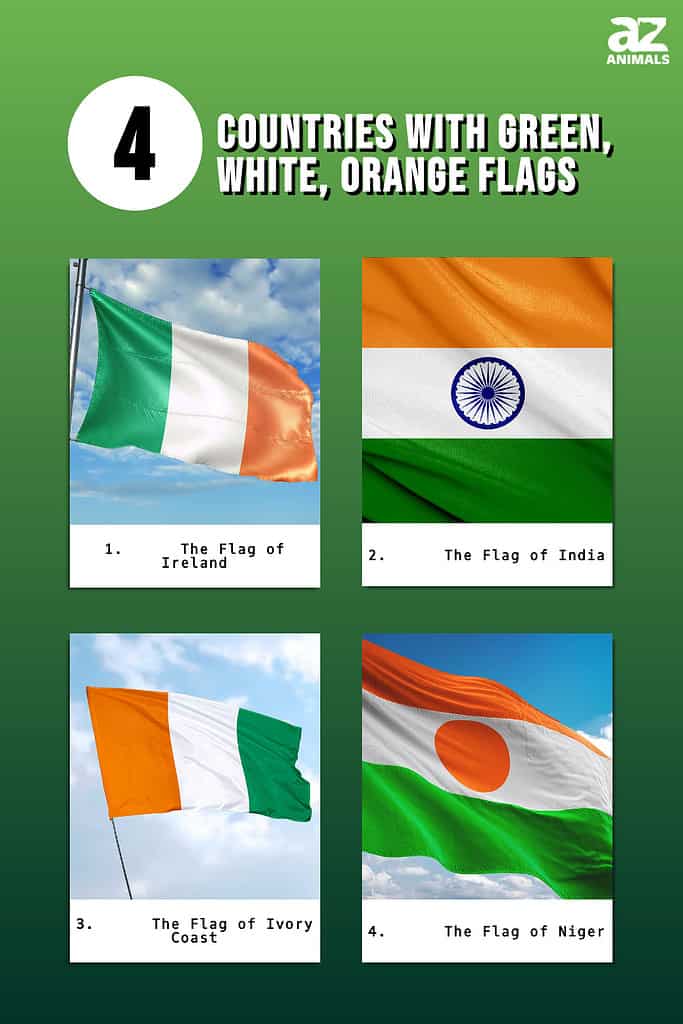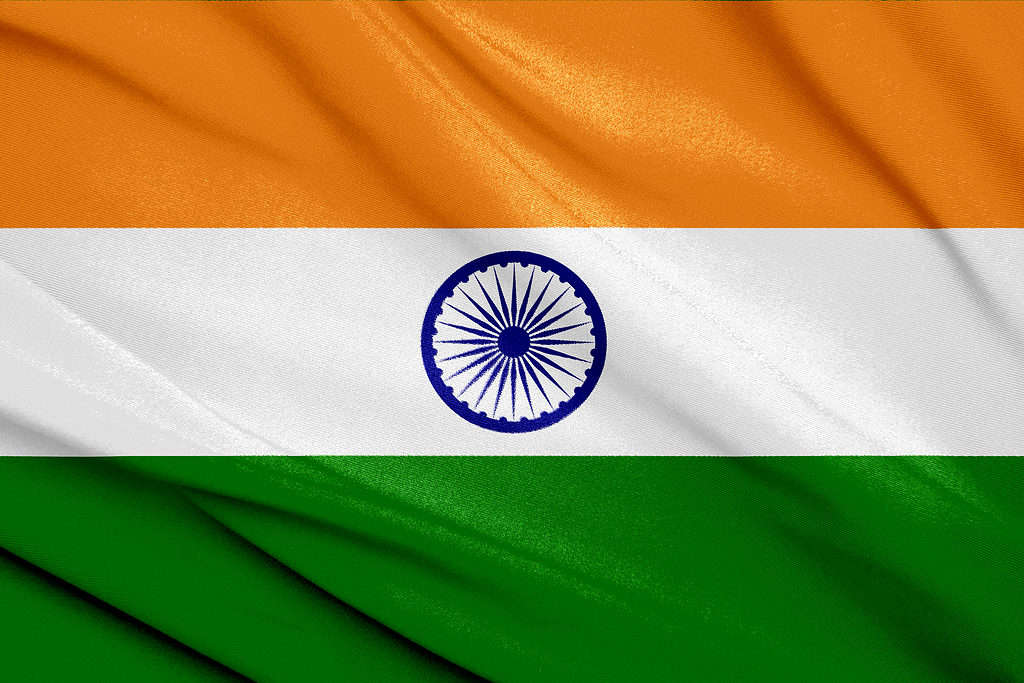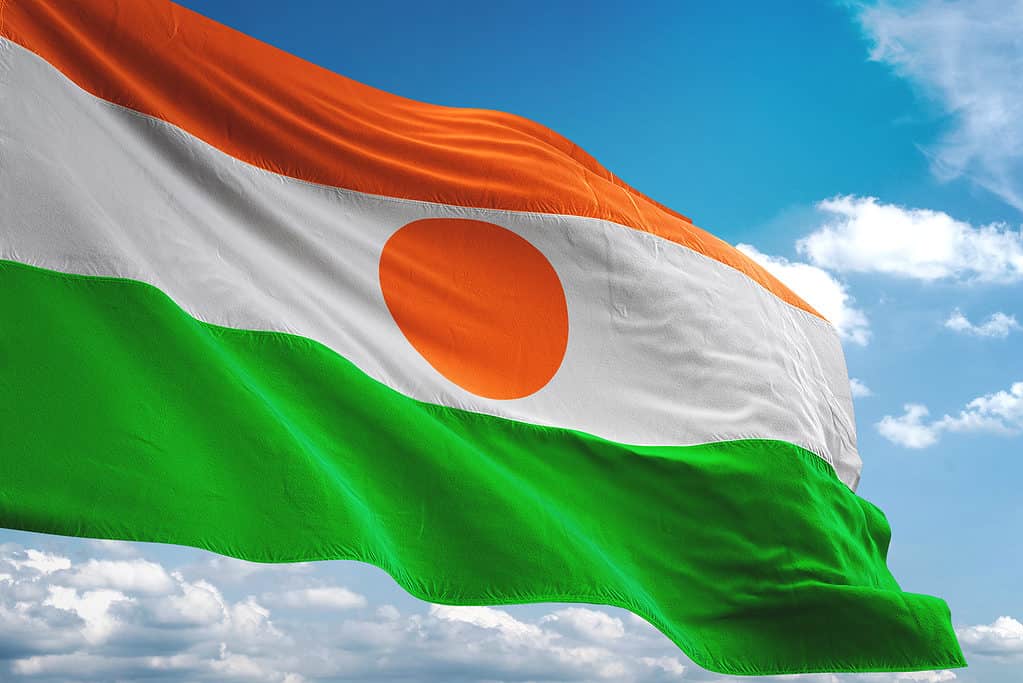
Similar to a coat of arms or a family crest, a flag serves as a means of identification. Many different institutions and groups are represented by different flags, including states, countries, military branches, corporations, schools, and more. Despite the visual similarity between some of them, they all carry significant symbolic value, particularly through the colors they use. There have been many studies and analyses of flags done to establish the most frequent significance for each color, especially for nations in general. However, these hues often have varying symbolic meanings depending on the country.
This article will examine all the nations whose flags feature the colors green, white, and orange. White is the second most common flag color; green is the fifth most common and orange is one of the least common. Only four countries in the world today have flags that feature the combination of colors green, white, and orange; and we’ll look at all of them here!
1. The Flag of Ireland

Thr flag of Ireland is a vertical tricolor flag in green, white, and orange.
©iStock.com/Oleksii Liskonih
Ireland’s flag is one of four that use the colors green, white, and orange. The Irish tricolor flag, flown for the first time on January 21, 1919, is very similar to the flag of the Ivory Coast (discussed later). The flag of Ireland has three vertical stripes, from top to bottom, with the colors green, white, and orange.
Irish Catholics and people who wish to see Ireland as one Republic are represented by the green on the flag. The white stripe in the middle of the flag symbolizes peace. Last but not least, the Irish flag’s orange line stands for the Irish protestant community’s pledge of devotion to the British crown.
2. The Flag of India

The flag of India is a horizontal tricolor flag in orange, white, and green with a blue spinning wheel design in the center.
©MriMan/Shutterstock.com
The flag of India was adopted on July 22, 1947, and features the colors orange, white, and green in a horizontal arrangement (from top to bottom). The flag’s green stripe stands for honesty and loyalty, the orange stands for bravery and sacrifice, and the white band stands for truth and peace.
The navy blue spinning wheel design in the middle of this green, white, and orange flag is the single most noticeable feature that sets it apart from the other flags on this list. The 24-spoke wheel is a national symbol known as the Ashoka Chakra. It represents a change for the better, in contrast to the original Indian flag that flew before independence.
3. The Flag of Ivory Coast

The flag of Ivory Coast is green, white, and orange.
©iStock.com/Royal Graphics
The flag of the Ivory Coast is also composed of green, white, and orange. The flag of the Republic of Ivory Coast, which was established on December 3rd, 1959, consists of three equal vertical bands of color in the following order: orange (left), white (center), and green (right).
This flag’s symbolism is interesting in that all of the colors represent its natural landscape. For example, the orange color stands in for the country’s savanna grasslands, while the white represents the country’s rivers and the green for its coastal forests. The green, white, and orange flags of the Ivory Coast and Ireland are only slightly different from one another. The only real distinction is in the order of the color scheme.
4. The Flag of Niger

The Niger flag is a horizontal flag in orange, white and green with an orange circle in the center of the flag.
©iStock.com/Oleksii Liskonih
The Republic of Niger’s flag is the final of our four countries to use the colors green, white, and orange. This flag is most like the flag of India, among all others. The flag was first flown on November 23, 1959, and its design mimics the flag of India by sharing its orange, white, and green stripes in a horizontal orientation. The tones of the colors are slightly different, however, with India’s orange stripe being noticeably lighter in color. Also, the flag of the Republic of Niger stands out because of the orange circle emblazoned in the center.
According to popular belief, the white stripe represents the Niger River, while the green stripe represents fertile land and hope. The orange stripe represents the Sahara desert. The sun is represented by the orange circle in the center of the white stripe. Some also say the circle represents independence and the white represents purity.
In Conclusion
You now know that there aren’t a lot of flags in the world whose colors are green, white, and orange. These hues, however, are obviously significant to the nations that have selected them for their national flags. Every country has its own unique color symbolism, rooted in its own history and culture. However, if you take the time to learn the significance of the colors in each flag, you’ll see that they all have a striking correlation. For instance, green is frequently associated with money, success, or natural resources; white, peace, and innocence; and orange, with freedom, bravery, and sacrifice.
The photo featured at the top of this post is © iStock.com/ronniechua
Thank you for reading! Have some feedback for us? Contact the AZ Animals editorial team.






